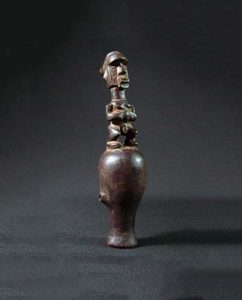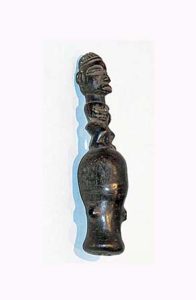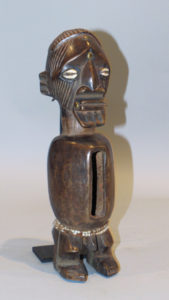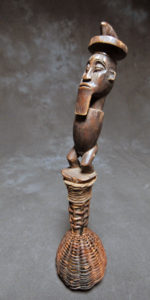Teke
The Teke people settled in a territory lying across the Republic of Congo, the Democratic Republic of Congo (formerly Zaire) and Gabon. During the 15th century, they were integrated into the Tio kingdom, but attained independence in the 17th century. Today, they live in villages led by a clan elder known as the Mfumu, who answers to a hereditary land-chief called Mfumu na tzee. Their economy is mainly based on farming maize, millet, and tobacco, but the Teke are also skilled fishermen and traders. They believe in a supreme God, Nzambi, whose favors can be obtained with the help of tutelary spirits.
Teke artists carved fetish figures. There are three characteristic elements: A variety of headdresses; the presence of fine parallel scarifications on the cheeks; and the addition of fetish materials “bonga” either in an abdominal cavity or in a body-enveloping sack from the head and feet protrude. Each figure has its own specific purpose not related directly to its appearance. These figures protect and assist the Teke and, if a fetish figure successfully demonstrates its power, its owner may detach its Bilongo, break it into several pieces and insert fragments into other figures. He will then sell the new figures to neighboring families, leaving the original statue with an emaciated body. In regards to masks,, the Teke use the moon-shaped masks. These masks are worn by member of the kidumu society either during the funerals of chiefs, weddings, or important meetings.
Source:
Baquart, Jean-Baptiste. The Tribal Arts of Africa. New York: Thames and Hudson Inc.




